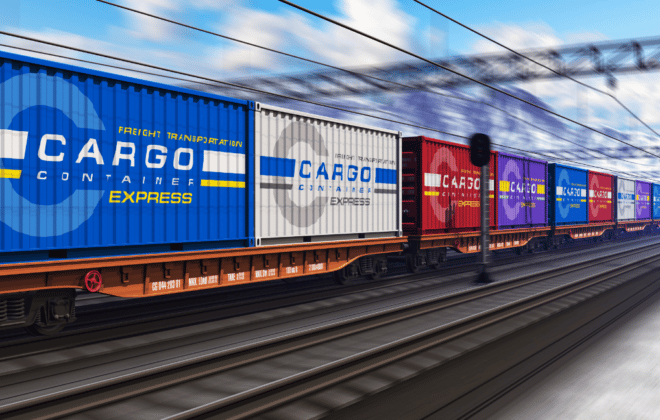
What’s the Importance of Distribution Channels to your Pricing Power?💥
Multiple distribution channels have become one of the quickest ways to boost sales. Nike, for instance, doesn’t only sell direct-to-consumer but has partnered with other retailers including Amazon. On the other hand, if you haven’t planned ahead, multiple channels can also increase the likelihood of conflict within the sphere of your brand, other retailers, and buyers. So, today, we ask what is the importance of distribution channels when it comes to your pricing system? What can you do to establish a multichannel platform and address conflict?
>Download Now: Free PDF How to Improve your Pricing Team Performance
In this article, we discuss what are the common types of channel conflict. What are the pros and cons of multiple channels? We ask what pro-channel relationships can do to a business. At Taylor Wells, we believe the value of your channels can greatly affect your pricing capability. However, it’s not as simple as product + channel = profit. We argue that without the right target audience for your distribution channels, coupled with a lack of research, could put you in a conflicting position that undermines your relationships, brand and value management.
What is Channel Conflict and the Importance of Balancing your Distribution Channels?
A sales channel is what you use to distribute and sell your product including:
- Your store (brick-and-mortar)
- Your website
- Partnerships with retailers and chain stores
- Online marketplace retailers
Channel conflicts are one of the drawbacks of marketing a company over several digital channels. The likelihood of channel frictions grows when you use a variety of sales channels to promote your business. When multiple partners in a business’s sales channels contradict one another or a retailer switches directly to a supplier or manufacturer, often copying a competitor’s products, it is one of the most common types of conflict that occur.
Other resellers may quickly identify your products and services online, inventory management, and your pricing which can cause conflict, unlike brick-to-mortar stores, particularly when different brands offer the same products to one market at various prices.
On the other hand, thanks to the expansion of eCommerce sales, online channels, and features like simple-to-use and reasonably priced SaaS eCommerce tools or platforms, selling directly to consumers (D2C) has become simpler.
The first rule is to balance your eCommerce stores with other online distribution channels like wholesalers and merchants. Treat each other as partners rather than rivals in creating and maintaining satisfied consumers.
The Importance of managing your distribution channels
1. Authority
To customers, simply being shown on the shelves of Nordstrom, Target, or Walmart can convey credibility. Hey, they’re in Walmart; they must be a real business, consumers reason.
2. Growth potential
You can get more audiences and volume overnight by using new channels. Manufacturer discounts brought on by higher quantities may boost your margins. While having a significant DTC presence might help you achieve high volume, many businesses find that working with a store is a quicker and more convenient choice.
3. Convenience
Many customers still prefer the ease of running into a store and purchasing an item right away. Or they desire the convenience of trying to return an item. In both cases, when you collaborate with a shop, you give customers convenience.
4. Advertising
You’re often in the minds of customers as part of the buyer’s journey, whether it’s through the app or online ads. By partnering with an online retailer, you receive “free” advertising, considering the statistics of the enormous expansion of e-commerce.
Challenges and the Importance of the Different Channels of Distribution
1. Direct and indirect sales
Often, businesses are challenged with balancing how they sell D2C (direct to consumer) and to retail partners at the same time. Without the right partnership and target audience, conflict arises from the wrong partnership or platforms.
When retailers go directly to a manufacturer to introduce a less expensive or “copycat” product, this is referred to as direct and indirect sales where manufacturers and retailers compete when one group bypasses another to sell directly to consumers.
2. Expenses and low margins
Breaking into multiple channels with other retailers like Amazon or Target can be a challenge when it comes to expenses. In fact, multiple channels can lead to low margins. In some cases where shops operate online, the demand surge can often be inconsistent. Many businesses are now noticing the declining demand for online shopping since the easing of restrictions.
In some cases, a D2C setup generates more revenue considering foot traffic and its location.
For instance, partnering with a retailer while you serve too few customers doesn’t make sense. It would not only lead to margin loss. But it can lead to competition with your partners or even altogether ending the contract you signed up for – which would only damage your expenses.
Oversaturation also occurs when manufacturers permit an excessive number of merchants to sell their brands in a certain market. Sales are ultimately harmed, and businesses face intense price rivalry as a result.
3. Pricing control
Some businesses make the mistake of granting complete price control to their distribution partners. Giving free rein over your pricing system puts you in a disadvantaged position. This ultimately impacts your revenue, profitability, and relationship with your partners.
It is specifically true for businesses that have competitors working with the same distribution channels. Not only can it lead to price wars over underselling your products and services. But you lose control over how often the implementation of discounts or promotional offers are done. This affects your overall value, control, brand management, and relationship with retailers.
For instance, a company might sell their goods both directly to consumers (D2C) and wholesalers/retailers. Conflict results from the possibility that the manufacturer and merchant are charging different prices for the same goods in the same marketplaces.
4. Entering contracts with major online retailers sometimes means that you don’t have complete control over your customer relationship management.
D2C is often unlike online stores where you can check how your products are doing and if they’re displayed correctly. For instance, contracts with retailers may put a business in an unfair position. Some retailers can employ heavy discounts and even require them to buy back items that don’t sell. This is a common scenario for products that have the same sell-by date.
Some brands dodge conflict by displaying older versions of their items on Amazon’s website at lower prices. This puts them in a better position when it comes to margins, considering Amazon’s fees. It also targets customers who can afford less expensive items or are more price-sensitive.
The Importance of your Marketing Distribution Channels & Strategy
5. Channel conflicts
A vertical channel conflict occurs when two parties (such as a manufacturer and a retailer) at various stages in the distribution chain disagree. But when two parties at the same level of a distribution channel—for example, two retailers—are at odds, this is referred to as a horizontal channel conflict.
Sometimes, a member of the distribution channel significantly lowers its prices to drive traffic to its store, often using price wars. They then upsell more expensive products to customers to make up for the margin loss on the initial discounted product. This creates conflict with other retailers, pressuring them to adjust the pricing of the same product, even if it heavily impacts their profit margin.
6. Brand Devaluation
Brand devaluation lowers the value of the connected brands and products by teaching consumers to anticipate a lower product price. Prospects may delay making a purchase decision to wait for a price reduction since devaluation teaches customers to anticipate lower prices.
Worse, it can cause stagnation in which customers don’t buy and instead, they wait until the next time prices drop. Similarly, people who have previously bought your products at a higher price could feel taken advantage of.
In other cases, misalignment in your strategic marketing can just be as fatal to your business. You might be promoting your product or services to a certain mainstream target audience. But your retailer partner is pitching it to a different, more exclusive audience as a luxury brand, for instance.
This confuses your customers and a lack of cohesive brand alignment. Yet, this can be resolved through frequent communication and understanding of both parties’ objectives in the first meeting.
Case study of the Importance of Distribution Channels and Marketing Distribution Channel Strategy
A grooming business, for instance, used a multi-channel strategy to successfully disrupt the men’s market. It began as a subscription service online but has since evolved into a hugely popular barbershop service. Now, they sell their goods through D2C web stores apart from retailers like Target and Walmart. It has also managed its pricing system by keeping consistent prices across its sales channels while preventing price competition between suppliers and manufacturers.
What can you do about the importance of balancing your distribution channels?
1. Choose your contracts
Before you sign up with any retailer, make sure you don’t put yourself on the short end of the deal. Choose one that gives you leverage or control over your products, negotiations over how and what you sell, as well as customer relationship management.
At the same time, you should start small. This way, you can create more perks, participation, and engagement with your customers without leaving out the distributors from the picture.
2. Be flexible
When it comes to your contract negotiations and customer relationship management, you can make adjustments when necessary. Especially if it does good for your reputation and increases your value perception for your customer base, stakeholders, and employees.
3. Optimise your pricing capability
Don’t implement discounts too frequently. Instead, offer freebies or giveaways as customers appreciate these without necessarily teaching them to rely on promotions and discounts only.
4. Offer personalised or exclusive products
Instead of relying on price drops, you could offer customised or exclusive items that your customers can’t access through any other distributor or retailer. You avoid sales channel conflict while creating engagement and demand for certain products.
This is where pricing professionals can save a business from potential downfall. With their expertise as shown by our consultation work with Australian businesses in the past 10 years, our findings show that the right set-up and pricing team can bring incremental earnings in less than 12 weeks.
After 6 months, a business can often capture at least 1.0-2.25% more margin using better price management processes. In 9-12 months, businesses are very often generating between 3-7% additional margin each year as they identify more complex and previously unrealised opportunities and risks.
Before considering adding more sales channels or partnering with retailers, you must ask:
- Does your brand match the target market of an online retailer, eCommerce platform, sales channel, or distributor?
- What are the possible conflicts that may arise when you add a new sales channel? A major factor is to look into the ROI of a sales channel before you sign up.
- Can you afford to start a big or small partnership with another retailer or eCommerce channel? What does your contract entail? Are there any hidden agendas that could ultimately put you in an unfair position in the long run?
- What’s your pricing system like? Have you thoroughly given it a thought about how you can maximise and optimise your pricing opportunities?
〉〉〉 Get Your FREE Pricing Audit 〉〉〉
Bottomline: Importance of Distribution Channels
Adding multiple channels can have its own challenges that are inevitable as it often is in any business setting. But with research, preparations, and analysis into new partnerships with eCommerce sales channels including its buyer category and behaviour, they can bring more opportunities that unlock revenue and margins that were previously unrealised.
For a comprehensive view on building a great pricing team to prevent loss revenue,
Download a complimentary whitepaper on How To Build Hiring Capability To Get The Best Pricing Team
Are you a business in need of help to align your pricing strategy, people and operations to deliver an immediate impact on profit?
If so, please call (+61) 2 9000 1115.
You can also email us at team@taylorwells.com.au if you have any further questions.
Make your pricing world-class!
Related Posts
Leave a Reply Cancel reply
Categories
- marketing strategy (26)
- Organisational Design (14)
- Podcast (114)
- Pricing Capability (87)
- Pricing Career Advice (10)
- Pricing Recruitment (19)
- Pricing Strategy (289)
- Pricing Team Skills (13)
- Pricing Teams & Culture (24)
- Pricing Transformation (47)
- Revenue Model (25)
- Sales Effectiveness (27)
- Talent Management (7)
- Technical Pricing Skills (35)






